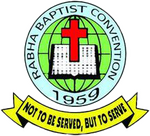The Rabha community have a rich, multi-faceted and distinct culture of their own. The agricultural practices, food habit and belief systems of the Rabhas reflect a conglomeration of features from both the Aryan and Mongoloid culture. The Rabha society is matrilineal. The village economy is based on agriculture and both men and women work in the fields. The women love to wear colorful clothes that they weave themselves and they wear a lot of beads and silver ornaments. The Rabhas are nonvegetarians and rice is their staple food.
The traditional economy of the Rabhas in general, is based on agriculture, forest based activities and weaving. In the past, the Rabhas used to practice shifting cultivation. They continued to cultivate the land with Gogo or bill-hook. Later they took up the job of settled cultivation and started cultivation with plough. Besides cultivation, hunting was also an old practice of Rabha people. Weaving was a traditional occupation of the Rabha women.
The mother tongue of Rabha people is Rabha. We are more centred on Rabha people. The Rabha Language is in endangered, but thank God the restoration started in 1959 AD.
They have 11 dialects: 1) Maithori, 2) Rongdani,3) Pati, 4) Dahori, 5) Dotla, 6) Halua, 7) Betolia, 8) Hanna, 9) Sunga, 10) Modahi, 11) Kocha Rabhas. These all are Rabhas but some of them have loss their mother tongues. Some of them have totally died out. But the Rongdani, Maithori and Kochas dialects are still used by Koch-Rabhas.
The Australian Baptist Missionary Soceity (ABMS) and The Baptist Church of Mizoram (BCM) by taking a banner called The Rabha Baptist Convention previously it was known as The Rabha Baptist Church union, initiated to save the Rabha Language.
